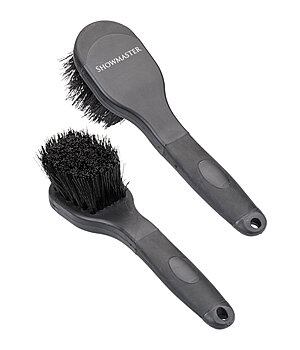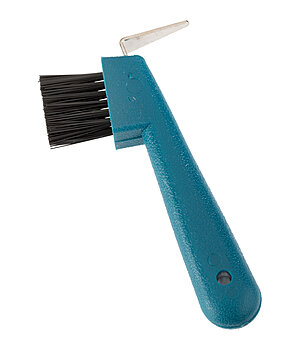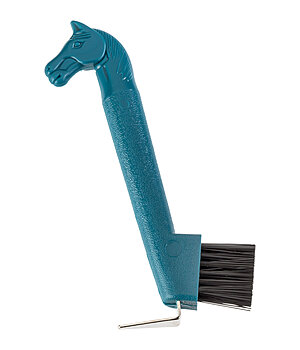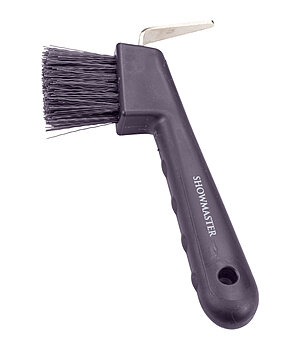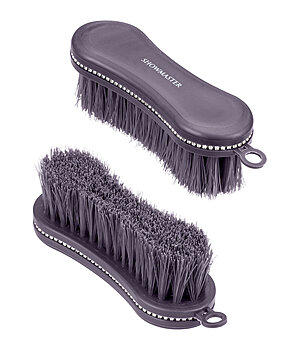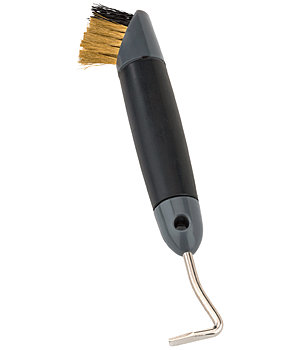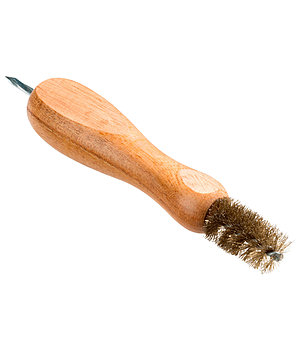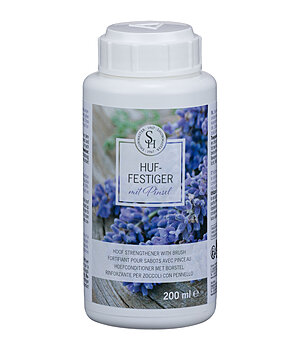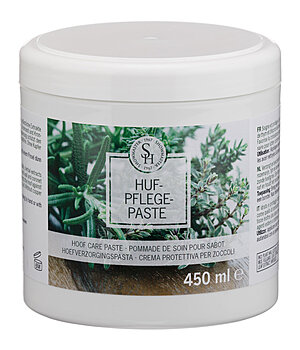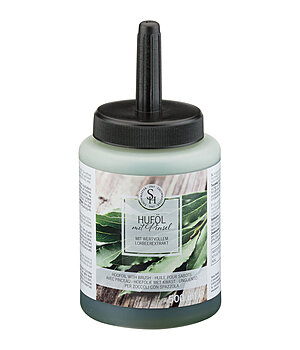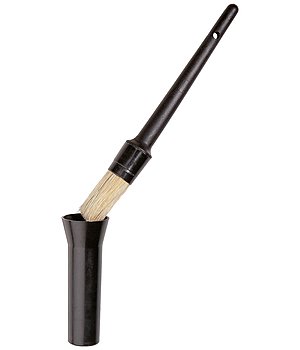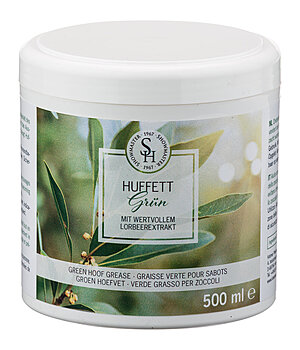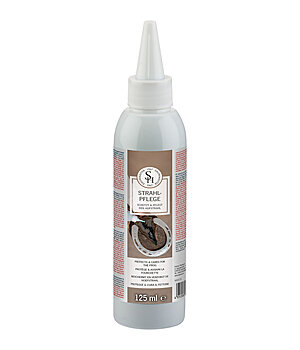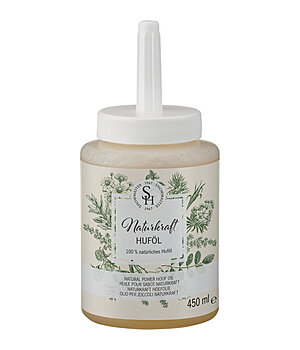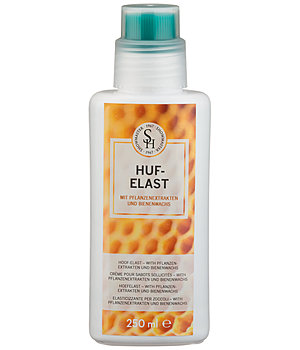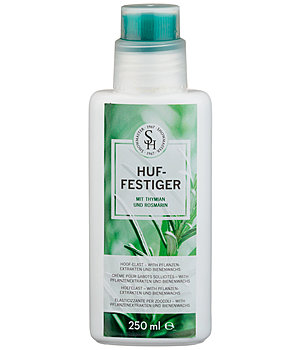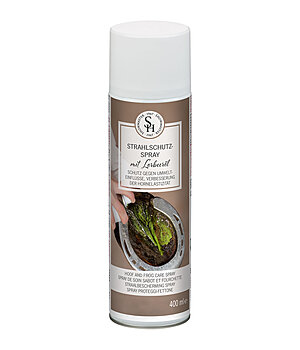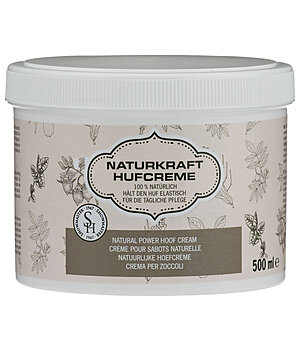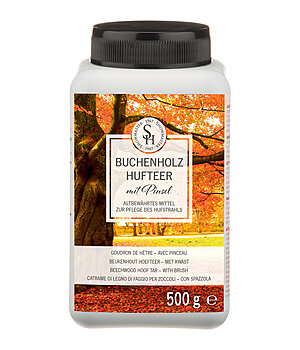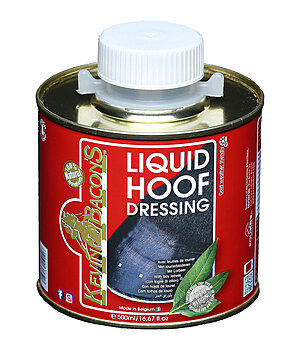Hoof care for horses
Four hooves carry our horses through life. With their robust horn, horses can safely traverse even rough terrain. In order to withstand the stresses and maintain the various functions of the hooves, strict attention must be paid to keeping them healthy through appropriate care and control. In the guide, we explain why hoof care is so important and show you what is involved.

What functions does a horse’s hoof perform?
- Tactile organ: Horses feel the ground with their hooves via numerous sensory cells. Important information about the course of movement is then passed on to the muscles via the nervous system.
- Hoof pump: The heart alone cannot maintain blood circulation in every part of the horse’s body. The hooves play an essential role with the so-called hoof pump. When walking, the horn capsule is constantly being pulled apart and then together again. This movement pumps the blood into the smallest vessels of the hooves and then flows back towards the heart against the force of gravity.
- Shock absorber: The hooves of our horses are more elastic than one might imagine from the outside. The horn layers in the horn capsule have different degrees of hardness, which make it possible for the hoof to deform under high stress. An interaction of the mechanisms of the hoof capsule, the heel walls and the coffin bone support allow maximum flexibility in enormous stress situations such as rough terrain or jumps.
- Excretory organ: The horn of the hooves is formed from proteins that are excreted from the body as waste material.
If the hooves cannot fully perform their functions due to neglected care or poor care conditions, this also has a lasting effect on other parts of the body. If the hoof pump fails due to a lack of movement, this puts a strain on the circulation and also damages the heart in the long term. If no elastic and healthy horn can be formed due to feeding or posture, the missing shock absorber function also affects tendons, joints, ligaments and the entire musculoskeletal system of the horse. If the hooves are no longer able to convert the excreted proteins into horn, the organs have to process the surplus of proteins, which leads to a strain on the organism and can manifest itself in organic or skin diseases.

Conversely, hoof quality and health can also be affected when organic diseases limit the listed functions of the hooves or when lack of hoof care damages the already formed horn.
The 5 pillars of Hoof Health – what do horses‘ hooves need?

Exercise
There are hardly any wild horses that have problems with their hooves. Horses are running and flight animals that cover an average of up to 30 kilometres a day. Due to the long running distances, the hooves of wild horses wear out naturally, which is why no hoof treatment is necessary in the wild. The more species-appropriate the movement profile of a horse, the better the conditions for a healthy hoof. For example, the functionality of the hoof pump and thus also the blood circulation of the hooves strongly depends on the horse’s walking pace. If the horse stands motionless in the stall for a longer period of time, the legs often swell as well, which is a sign of a lack of blood circulation in the legs.
Housing conditions and stable hygiene
To keep hooves healthy, one should always keep an eye on the housing conditions. Clean surfaces play a major role here, as the horse’s excretions contain ammonia, which can also cause thrush if it comes into frequent contact with the hooves. Therefore, muck out regularly – both in the box and in the pasture or paddock. Pay attention to the condition of the ground, especially in the outdoor area. As a rule, mud and mud cannot harm a horse – on the contrary: the hooves must absorb moisture in order to remain elastic. However, if the horse stands on damp ground for too long, the hooves can become soft. In addition, excessive moisture in the fetlock area promotes the development of mallenders. You can counteract the excessive moisture absorption of the hooves with appropriate care products. If the horse is standing on predominantly dry ground, an additional supply of moisture may be necessary.on Feuchtigkeit notwendig.


Optimal nutrient supply
Many deficiency symptoms can be recognised by the condition of the skin, coat and hooves. For example, an increased metabolism (e.g. during the coat change) can lead to too little keratin being produced by the organism, which is indispensable for a stable hoof. These deficiencies can be compensated for in the long term by adding the appropriate nutrients to the feed, thus improving the quality of the hoof in the long term. Often the hooves also give an indication of organic diseases or problems, e.g. if the hoof turns yellow due to poor liver values. In this case, a veterinary diagnosis can provide information on whether the organic state of health and thus also the appearance of the hooves can be improved with suitable supplementary feeds.
Professional hoof care or farrier
If your horse is shod, an appointment with the farrier is due every 6-8 weeks. For unshod horses, there is a greater margin between appointments for professional hoof care – depending on the condition of the hooves. Hooves usually grow up to 8 millimetres per month. Since domesticated horses usually do not wear out their hooves as quickly due to lack of movement, they must be regularly rasped or trimmed by the farrier or hoof care professional.


Checking and care
Checking and cleaning the hooves should be on the daily to-do list. The daily scraping of the hooves is important in order to quickly remove foreign objects that have entered the hoof, such as stones, etc., which can lead to unpleasant hoof ulcers. In order to have a clear view of the hoof, the hooves must be thoroughly cleaned with a hoof scraper and a brush. We explain how to do this here:
How to clean your horse’s hooves properly
- The horse should stand on a safe and level surface. Stand facing backwards at the horse’s shoulder or croup, reach around the leg from behind and gently move down along the leg. Once at the fetlocks, you can pick up the hoof – many horses lift their hooves voluntarily at the slightest touch, the command „hoof“ or „give hoof“ can serve as a reinforcer. To avoid a sudden kicking out at the hind hooves, pull the leg out slightly backwards and rest the horse’s tubular leg on your own thigh.
- The hoof is now scraped out with a hoof scraper. The scraper is used to remove dirt and stones from the frog. With a hoof brush or the integrated brush on the hoof scraper, the finer points are taken care of. If the horse finds it pleasant, the hooves can also be massaged with the brush for a little longer. This stimulates the blood circulation and the function of the hoof pump. Also, take some time to examine the hooves closely so that hoof diseases or injuries can be detected and treated quickly.
- Never simply drop the hooves after cleaning. Set the leg down carefully and accompany the movement with the command „off“ or „hoof off“.
Products for hoof cleaning
Do I need hoof oil, hoof ointment etc.
If the hooves themselves are intact, it is usually not necessary to use care products. The condition of the hooves depends on many different factors: Nutrition, organic diseases, husbandry conditions and even the seasons have an immense influence on the appearance of the hooves.
While a change in diet or the treatment of underlying organic diseases can have a positive effect on the hooves rather in the long term, care products are the first means of choice to achieve an optimal result in a short time.
If the hooves are dry and cracked, moisture is missing. This can be remedied by a change in the husbandry conditions or by regular watering of the hooves. After watering, it is recommended to treat the hooves with hoof grease to prevent the absorbed moisture from evaporating.
Too frequent application of hoof oils and greases is not recommended for dry hooves, especially if the hooves have not been moisturised beforehand. Oils and greases prevent the penetration of moisture, which dries out the hoof even more. Oils and greases, but also hoof tar, are particularly suitable in winter to regulate the moisture balance of the hooves and to prevent the hooves from softening due to standing on muddy ground. To adjust the horn quality in case of too soft or brittle hooves, hoof firmers are suitable, which stabilise the horn and also prevent the penetration of bacteria and fungi. For frog problems such as thrush, there are also appropriate preparations that counteract the decomposition process.

to the selected hoof care products
If the hooves appear conspicuous during the daily check, contact your veterinarian immediately. When checking, you should not only consider visible changes such as injuries or cracks, but also the smell and hoof temperature. Unusually warm hooves indicate e.g. laminitis or leather dermatitis, a foul odour indicates thrush.



